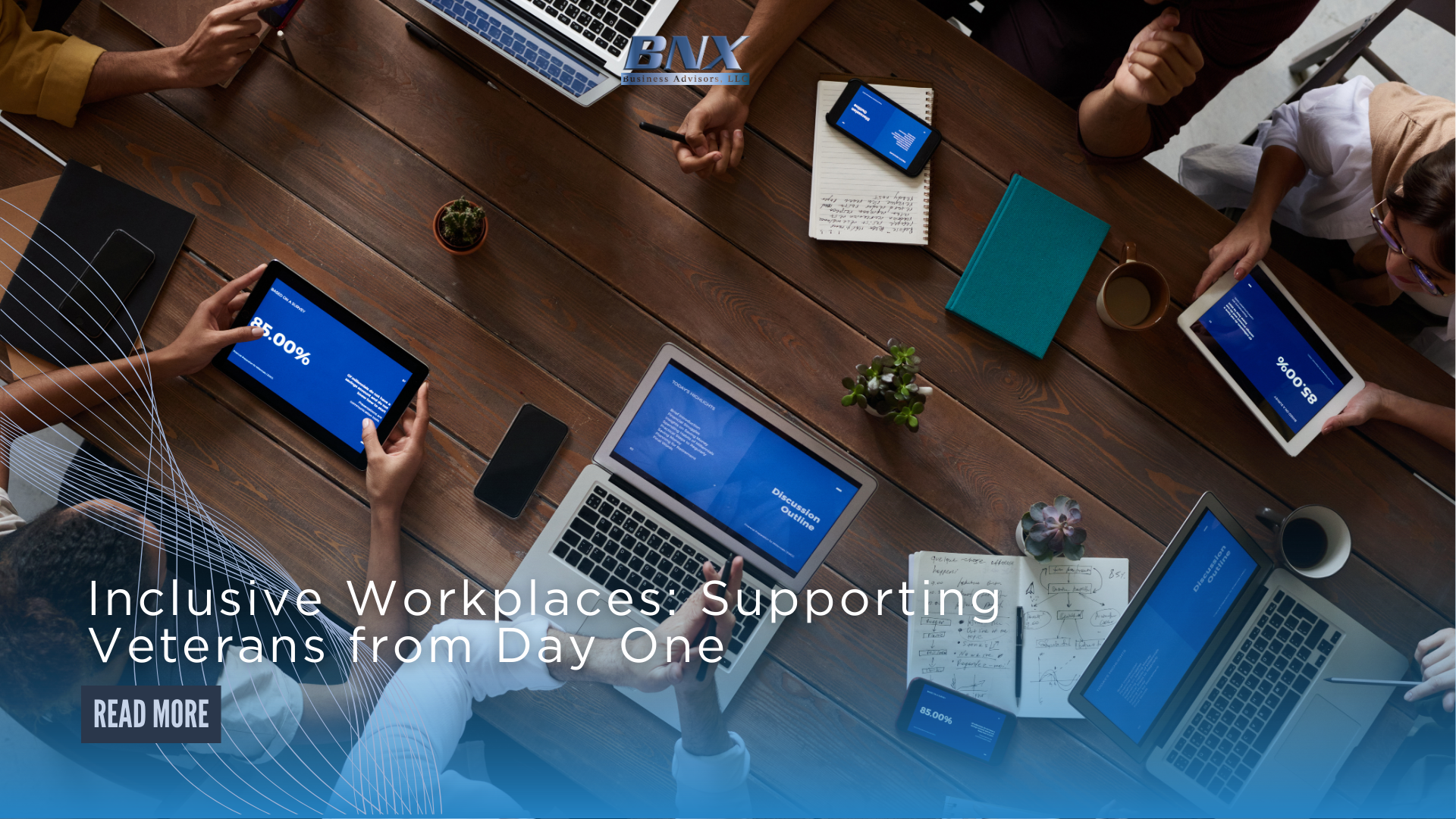

Table of Contents
As C-suite executives, fostering an inclusive workplace for veterans is essential not only for creating a positive company culture but also for maximizing the potential of your workforce. Veterans bring unique skills and experiences that can enhance your organization, but their successful transition into civilian roles depends significantly on how inclusive and supportive your onboarding and retention practices are. In this blog, we will explore key strategies for creating an inclusive workplace for veterans, focusing on onboarding and retention.
1. Develop a Comprehensive Veteran Onboarding Program
An effective onboarding program sets the stage for long-term success and integration of veteran employees. Here are essential components to include:
a. Tailored Orientation
Design an orientation program that acknowledges the unique backgrounds of veterans. Consider offering specific sessions that address their transition from military to civilian life, focusing on:
- Cultural Adaptation: Provide insights into corporate culture, expectations, and communication styles. This can help veterans feel more comfortable in their new environment.
- Resources and Support: Highlight available resources, including Employee Assistance Programs (EAPs), mentorship opportunities, and veteran-focused employee resource groups (ERGs).
b. Peer Mentorship
Establish a mentorship program pairing veterans with seasoned employees or fellow veterans. This relationship can provide guidance, encouragement, and a safe space to discuss challenges. Mentors can help veterans navigate workplace dynamics and identify opportunities for growth.
2. Foster an inclusive Workplace for Veterans that includes Understanding and Respect
Creating an inclusive environment begins with cultivating a culture of understanding among all employees. Implement the following strategies:
a. Training and Awareness
Provide training for all employees on military culture and the challenges veterans may face in the transition to civilian life. This training can foster empathy, reduce misunderstandings, and build a more cohesive workplace. Include topics such as:
- Common Experiences: Discuss the experiences of veterans in the military and how those experiences may influence their perspectives and behaviors in the workplace.
- Unconscious Bias: Address potential biases that may affect interactions with veteran employees and provide strategies to mitigate them.
b. Celebrate Military Contributions
Recognize and celebrate the contributions of veterans within your organization. This could include:
- Veterans Day Events: Organize events or initiatives to honor veterans and their service, such as recognition ceremonies or community service projects.
- Spotlight Success Stories: Share stories of veteran employees’ accomplishments in company newsletters or on social media. This not only honors their service but also showcases the value they bring to the organization.
3. Provide Ongoing Professional Development to enhance your Inclusive Workplace for Veterans
To retain veteran talent, it’s crucial to invest in their continuous growth and development. Consider these approaches:
a. Customized Development Plans
Work with veteran employees to create personalized development plans that align with their career goals. This can include:
- Skills Training: Offer training programs to help veterans acquire new skills or certifications that are relevant to their roles or desired career paths.
- Leadership Development: Provide opportunities for veterans to participate in leadership programs or initiatives, encouraging their growth into leadership roles within the organization.
b. Regular Check-Ins
Establish a system for regular check-ins between managers and veteran employees. These meetings can be an opportunity to discuss progress, address any concerns, and provide feedback. This ongoing communication fosters a supportive environment and allows veterans to voice any challenges they may face.
4. Create Veteran-Focused Employee Resource Groups (ERGs)
Establishing ERGs specifically for veterans can foster community and support within your organization. These groups provide a platform for veterans to connect, share experiences, and advocate for their needs. Here’s how to make them effective:
a. Leadership Support
Ensure that senior leadership actively supports and participates in these ERGs. This demonstrates a commitment to inclusivity and encourages wider participation.
b. Activities and Networking
Encourage the ERG to organize networking events, professional development workshops, and social activities. These events can help veterans build connections and feel more integrated within the organization.
5. Monitor and Evaluate Inclusivity Efforts
To ensure your initiatives are effective, regularly assess and evaluate your onboarding and retention strategies for veterans:
a. Gather Feedback
Conduct surveys and focus groups with veteran employees to gather insights on their experiences and the effectiveness of your initiatives. Use this feedback to make informed adjustments and improvements.
b. Track Retention Rates
Monitor retention rates of veteran employees and analyze trends to identify areas that may require additional support. This data can help you understand the effectiveness of your programs and guide future initiatives.
Conclusion
Creating an inclusive workplace for veterans is not only a moral obligation but also a strategic advantage. By implementing effective onboarding practices, fostering a culture of understanding, providing ongoing development opportunities, and actively supporting veteran-focused ERGs, your organization can successfully integrate veteran talent and retain their valuable contributions.
As C-suite executives, you have the opportunity to lead by example and champion inclusivity within your organization. By prioritizing the needs of veteran employees, you can cultivate a diverse, engaged, and high-performing workforce that drives innovation and success. Let’s commit to building a workplace that not only honors the service of veterans but also empowers them to thrive in their civilian careers.
📌 If you need to know more, you can contact us directly and visit our website
Email: YaraB@BNXBA.com
Website: www.BNXFinancial.com
